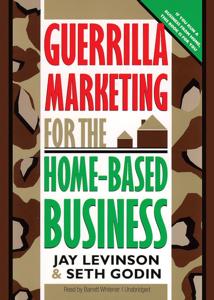
Want to learn the ideas in Guerrilla Marketing better than ever? Read the world’s #1 book summary of Guerrilla Marketing by Jay Conrad Levinson, Seth Godin here.
Read a brief 1-Page Summary or watch video summaries curated by our expert team. Note: this book guide is not affiliated with or endorsed by the publisher or author, and we always encourage you to purchase and read the full book.
Video Summaries of Guerrilla Marketing
We’ve scoured the Internet for the very best videos on Guerrilla Marketing, from high-quality videos summaries to interviews or commentary by Jay Conrad Levinson, Seth Godin.
1-Page Summary of Guerrilla Marketing
Overview
Positioning is one of the most popular books about marketing strategies. The book focuses on how to position your product in the market to become an industry leader.
When Jay Conrad Levinson first published his book, Guerrilla Marketing, in the early 1980s, he started a marketing revolution. However, since then marketers have developed better techniques and tools to help them achieve their goals. This revised edition of Levinson’s classic explains how you can leverage today’s new innovative marketing tools and strategies whether you’re a small business owner or work for a larger competitor.
The author gives us key points on how giving things away can sometimes be more profitable than selling them, and why marketing campaigns that break sales records can still lose money. The author also says you should be friends with journalists because they are the ones who decide what’s newsworthy.
Big Idea #1:
Marketing is the process of presenting your company to the public.
When you think of the word “marketing”, what comes to mind? TV commercials, newspaper ads, and billboards are all good examples. But have you ever stopped to think about what marketing really means?
Marketing is everything that consumers see, hear, and feel about your company. It includes the way you present yourself to customers through logos, packaging, or even the layout of a newsletter. Marketing can make people think of your brand as more exclusive or better value for money than others. Another thing about marketing is that it’s an ongoing process and not a one-time event.
So, you start by planning a marketing campaign. To do this, you could send out flyers in the streets or e-mails to potential customers. However, most people prefer TV ads and other traditional forms of advertising.
But, once you’ve finished this campaign, don’t rest on your laurels. Instead, reinvest the money from sales into more marketing because new competitors are always coming up and existing ones change all the time.
Marketing can be defined as a process because it’s not only directed at gaining new customers, but also keeping existing ones. You need to remind them of your existence again and again even if they’re satisfied with what you offer. So, the cycle never stops; you just begin anew.
Now that we understand the basic philosophy of marketing, you can better prepare to become a successful marketer.
Big Idea #2: Guerrilla marketing is a great way to promote your business. It’s inexpensive and innovative, so it works well for small businesses that can’t afford expensive marketing campaigns.
Guerrilla marketing is a form of promotion that’s different from traditional marketing. It involves using unconventional methods and tactics to promote products, brands, or services.
Most traditional marketers believe that success comes from making large investments in marketing campaigns. They think the best way to do this is by spending a lot of money on TV commercials and full-page ads in Time magazine.
Guerrilla marketing is a way of reaching customers by using unconventional methods. It’s often used by small businesses that can’t afford big advertising campaigns. Guerrilla marketers are only concerned with the bottom line and not other measurements like traffic or sales, which don’t always accurately reflect the success of an ad campaign. Traditional marketing is usually one-sided whereas guerrilla marketing involves dialogue between customer and company.
In a traditional TV commercial, the marketer transmits one message that consumers have to accept. However, in guerilla marketing, both sides get involved and interact.





